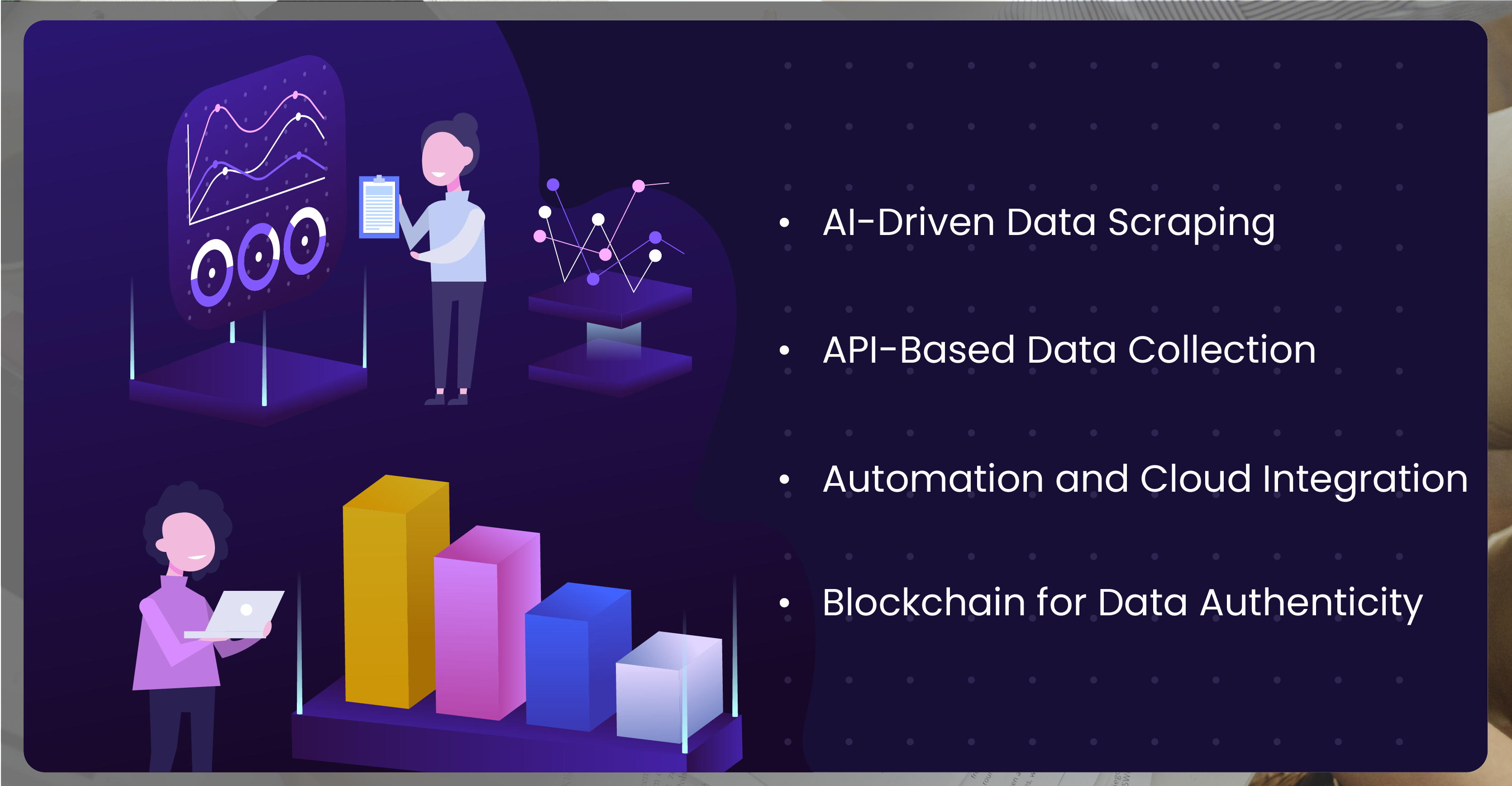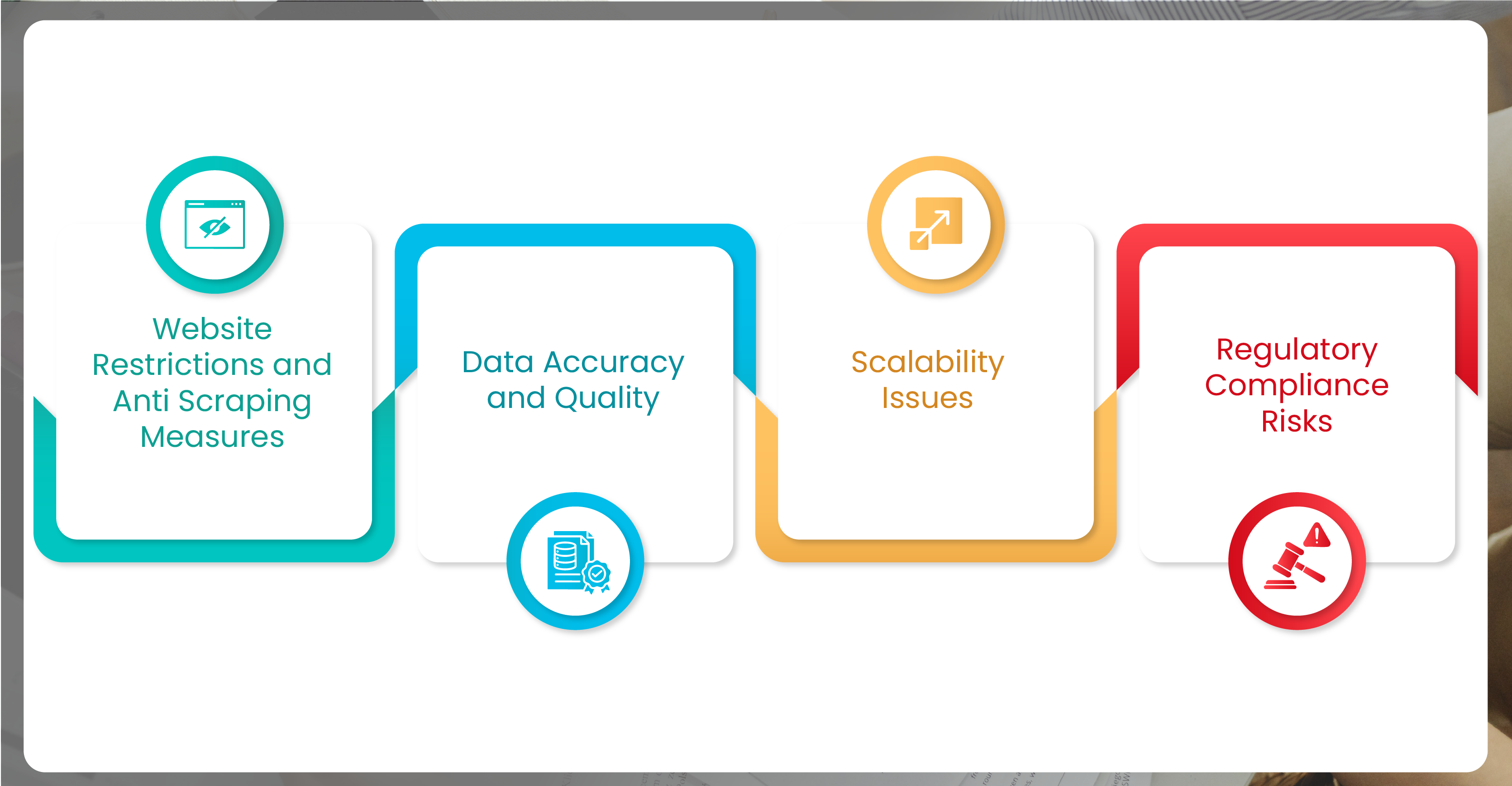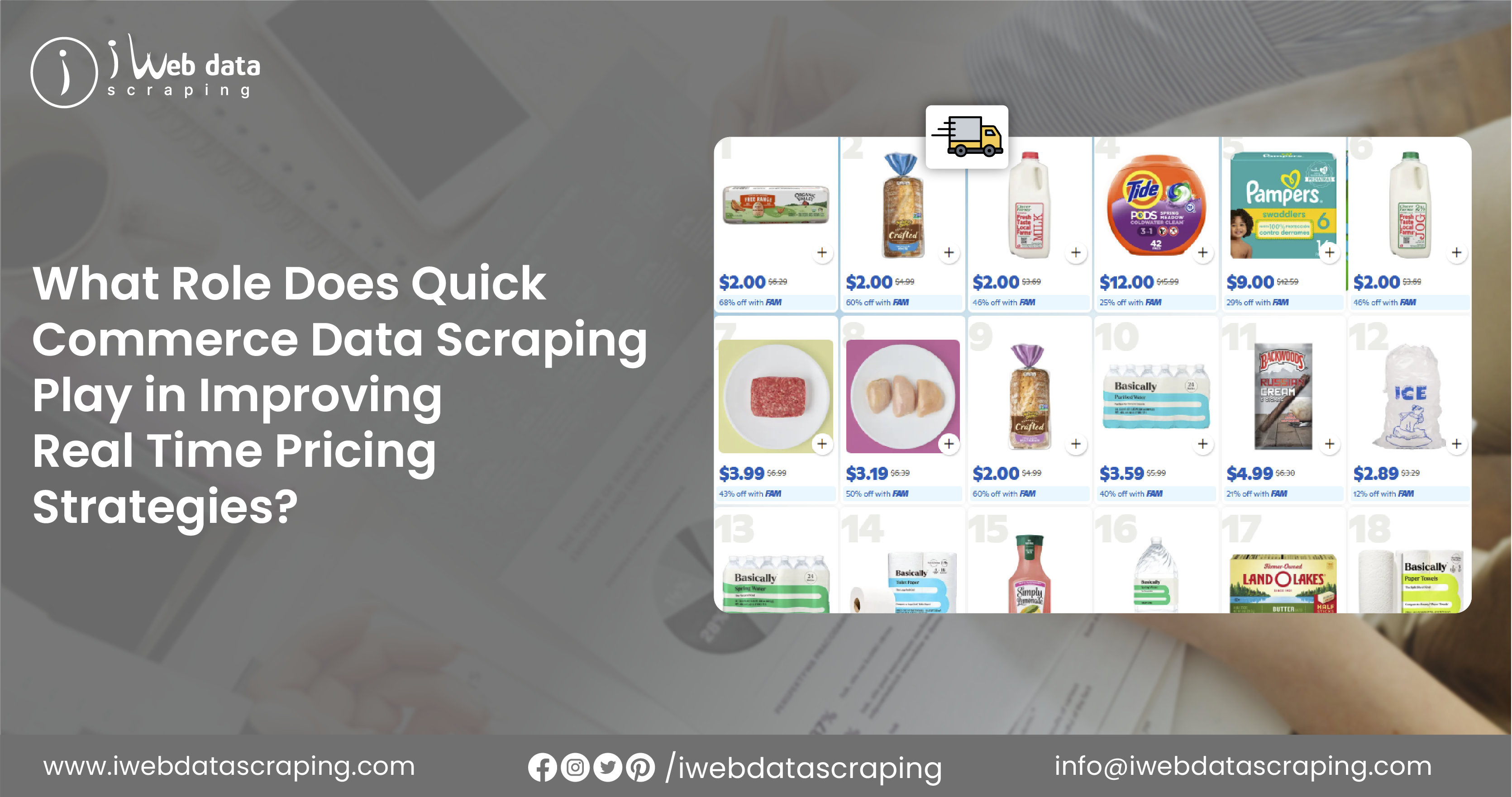Introduction
Quick commerce (Q-commerce) transforms retail by offering ultra-fast deliveries of groceries,
household essentials, and more within minutes. Platforms like Blinkit, Instamart, Gorillas, Getir,
and GoPuff are reshaping consumer expectations, making speed a critical factor in shopping.
However, the key to this revolution is data scraping, which fuels real-time decision-making.
Extracting Real-Time Data Improves Quick Commerce Shopping by enabling businesses to
track demand, optimize pricing, and refine logistics. Quick Commerce Shopping Efficiency with
Data Extraction Tools also helps retailers enhance inventory management and customer
experience. By leveraging data scraping, companies gain valuable insights into purchasing
behavior, competitor strategies, and market trends. This technology empowers retailers to stay
competitive in the fast-paced Q-commerce landscape, ensuring seamless service and rapid
deliveries. As quick commerce continues to evolve, the role of Quick Commerce Data Scraping
will become even more crucial in maintaining efficiency and driving future innovations.
The Role of Data Scraping in Quick Commerce

Data scraping refers to the automated extraction of information from various online sources. In
the context of quick commerce, it enables businesses to gather and analyze real-time data from
competitor platforms, consumer behavior, and product availability. By leveraging sophisticated
web scraping techniques, Q-commerce platforms can make data-driven decisions, ensuring a
seamless shopping experience for customers.
- Real-Time Pricing Optimization: One of the most crucial aspects of quick commerce is dynamic pricing. Customers are susceptible to price changes, and competitors adjust their prices frequently. With data scraping, Q-commerce platforms can continuously monitor market prices and ensure competitive pricing strategies. By leveraging AI-driven pricing models, companies can dynamically adjust costs based on demand, supply, and competitor activity, ensuring consumer profitability and affordability. Scraping Data for Better Shopping Experiences allows businesses to keep up with these fluctuations and optimize real-time pricing.
- Demand Prediction and Inventory Management: Efficient inventory management is a cornerstone of quick commerce. Unlike traditional retail, Q-commerce requires predictive analytics to ensure stock levels align with real-time demand. Businesses can optimize inventory distribution by scraping historical purchasing patterns, regional demand trends, and seasonal variations. This prevents overstocking or stockouts, reduces wastage, and improves operational efficiency. Extracting Data to Boost Quick Commerce enables more accurate forecasting and helps businesses stay ahead of demand.
- Enhancing Delivery Efficiency: Quick commerce thrives on ultra-fast delivery times. Web scraping helps companies analyze real-time traffic conditions, rider availability, delivery routes, and customer locations. Companies can reduce delivery time, fuel consumption, and operational costs by integrating scraped data with advanced route optimization algorithms. This improves customer satisfaction and increases order fulfillment rates. Quick Commerce Data Scraping Services are pivotal in gathering the necessary data to optimize deliveries and enhance service efficiency.
- Understanding Consumer Behavior: Customer preferences are evolving rapidly, and data scraping provides a direct lens into shifting trends. E-commerce platforms can tailor recommendations, optimize user experience, and offer personalized deals by analyzing product searches, customer reviews, and purchasing patterns. Scraping data from social media platforms, forums, and review websites also helps businesses gauge sentiment analysis and modify their strategies accordingly. Quick Commerce Datasets offer valuable insights into these changing behaviors, enabling companies to stay responsive to consumer needs.
- Competitive Intelligence and Market Trends: Staying ahead of the competition in quick commerce requires a deep understanding of market trends. Scraping competitor websites, pricing structures, promotional offers, and product availability provides valuable insights. Companies can benchmark their services against industry standards and pivot their strategies accordingly. Additionally, identifying emerging product categories can help businesses expand their inventory based on demand forecasts. Quick Commerce Data Intelligence empowers businesses to monitor the competition and adapt swiftly to industry shifts.
Future Trends in Quick Commerce Data Scraping

As technology evolves, the future of data scraping in quick commerce will see advancements that refine the efficiency of operations. Several emerging trends will shape the future landscape of data-driven Q-commerce.
- AI-Driven Data Scraping: Artificial intelligence (AI) and machine learning (ML) are transforming web scraping techniques. Instead of traditional rule-based scrapers, AI-powered bots can adapt to website changes, extract structured data, and identify patterns in consumer behavior. Natural language processing (NLP) further enhances data classification, allowing businesses to derive more actionable insights from unstructured data sources like reviews, social media, and forums.
- API-Based Data Collection: While web scraping remains dominant, many quick commerce platforms are transitioning to API-based data extraction. APIs provide a more structured and legal way to access data while minimizing the risk of website bans or legal complications. Retailers increasingly offer data access through APIs, allowing real-time product, inventory, and pricing updates.
- Automation and Cloud Integration: Cloud-based data scraping solutions make it easier for Q-commerce platforms to collect, store, and process vast amounts of data without infrastructure limitations. Automated scraping workflows can run at scale, offering real-time data integration with cloud-based AI analytics platforms. This ensures seamless data-driven decision-making across all business functions.
- Blockchain for Data Authenticity: Blockchain technology can revolutionize data scraping by ensuring data authenticity and transparency. As Q-commerce businesses rely heavily on accurate market data, blockchain-based data verification mechanisms can prevent manipulation, ensuring businesses operate with reliable datasets. Additionally, decentralized web scraping models can help balance data ownership and security concerns.
Ethical and Legal Considerations

As data scraping becomes more prevalent, ethical data usage and legal compliance concerns are gaining attention. Governments and businesses are tightening regulations to prevent unauthorized data scraping. The future will shift towards ethical scraping practices, where companies ensure compliance with GDPR, CCPA, and other data privacy regulations. Transparent data agreements and adherence to robots.txt directives will become standard industry practices.
Challenges and Solutions in Quick Commerce Data Scraping

Despite its benefits, data scraping in Q-commerce has challenges that must be addressed for sustained growth.
- Website Restrictions and Anti-Scraping Measures: Many e-commerce platforms implement CAPTCHAs, IP blocking, and bot detection mechanisms to prevent data scraping. Using proxy rotation, headless browsers, and AI-driven scraping can help overcome these challenges. Ethical scraping techniques, such as obtaining data through official APIs, are viable solutions.
- Data Accuracy and Quality: Extracting data is only beneficial if it is accurate and up-to-date. Implementing data validation mechanisms and automated error detection algorithms ensures data consistency. AI-powered data cleaning techniques help eliminate duplicates and inaccuracies, providing reliable insights for decision-making.
- Scalability Issues: Handling large-scale data scraping operations requires robust infrastructure. Cloud-based solutions and distributed web scraping frameworks allow businesses to scale data collection without performance bottlenecks. Adopting scalable web scraping architectures improves efficiency and reduces downtime.
- Regulatory Compliance Risks: Navigating global data privacy regulations is a complex challenge. To avoid legal repercussions, companies must stay updated on data protection laws, user consent policies, and scraping limitations. Partnering with legal experts and implementing ethical scraping guidelines ensures compliance while maintaining a competitive edge.
Conclusion
The future of quick commerce data scraping is bright, offering unparalleled opportunities for businesses to enhance their pricing strategies, inventory management, delivery efficiency, and customer engagement. With AI-driven automation, API-based data access, and cloud integration, Q-commerce platforms can refine operations and provide ultra-fast, highly personalized shopping experiences. However, ethical and legal considerations will be crucial in shaping the industry’s sustainability.
As consumer expectations continue to rise, leveraging real-time, accurate, and actionable data will define the success of Q-commerce platforms. Businesses that embrace innovative data scraping solutions while adhering to regulatory frameworks will lead the next phase of the quick commerce revolution, making shopping experiences faster, smarter, and more efficient.
Experience top-notch web scraping service and mobile app scraping solutions with iWeb Data Scraping. Our skilled team excels in extracting various data sets, including retail store locations and beyond. Connect with us today to learn how our customized services can address your unique project needs, delivering the highest efficiency and dependability for all your data requirements.





